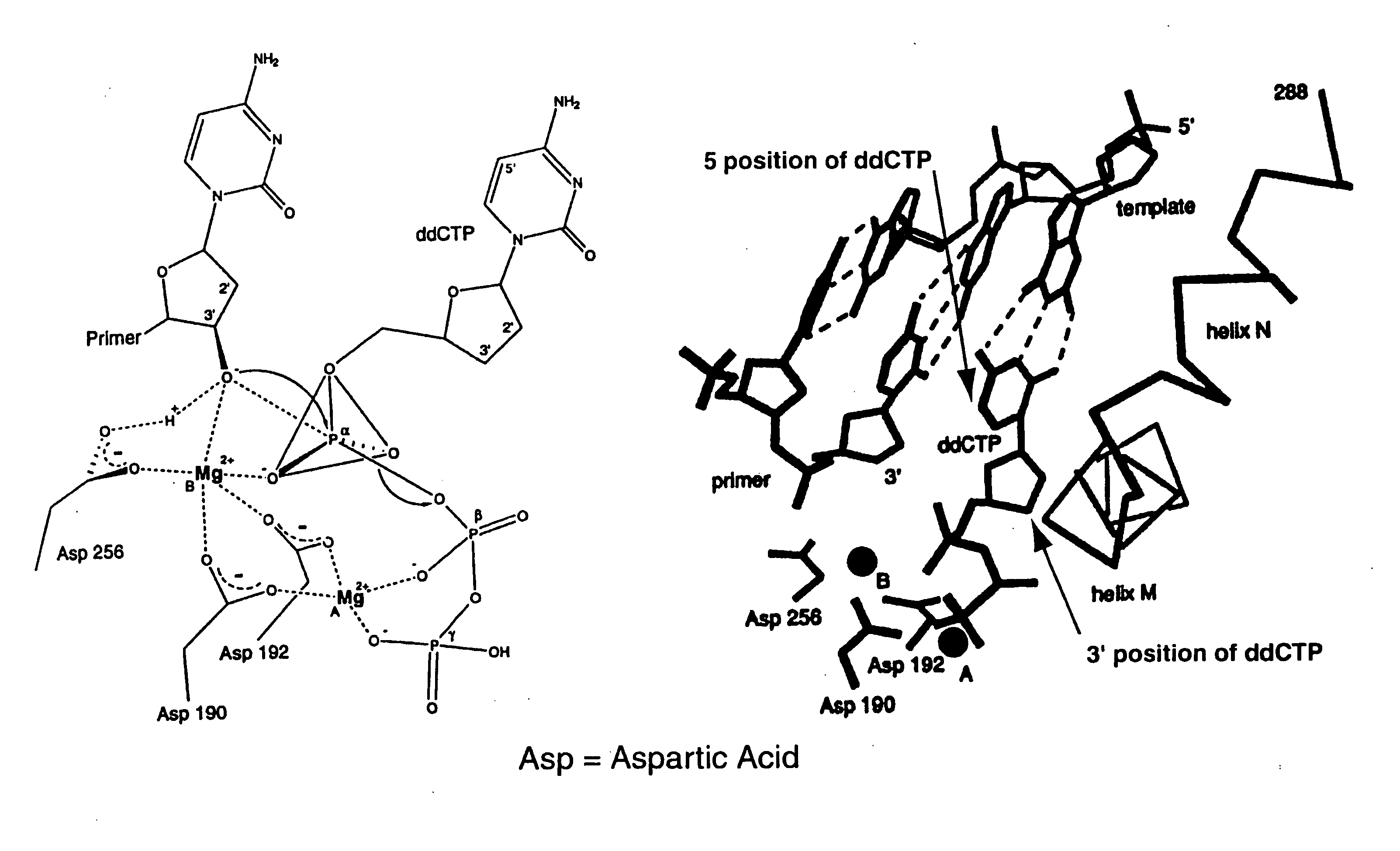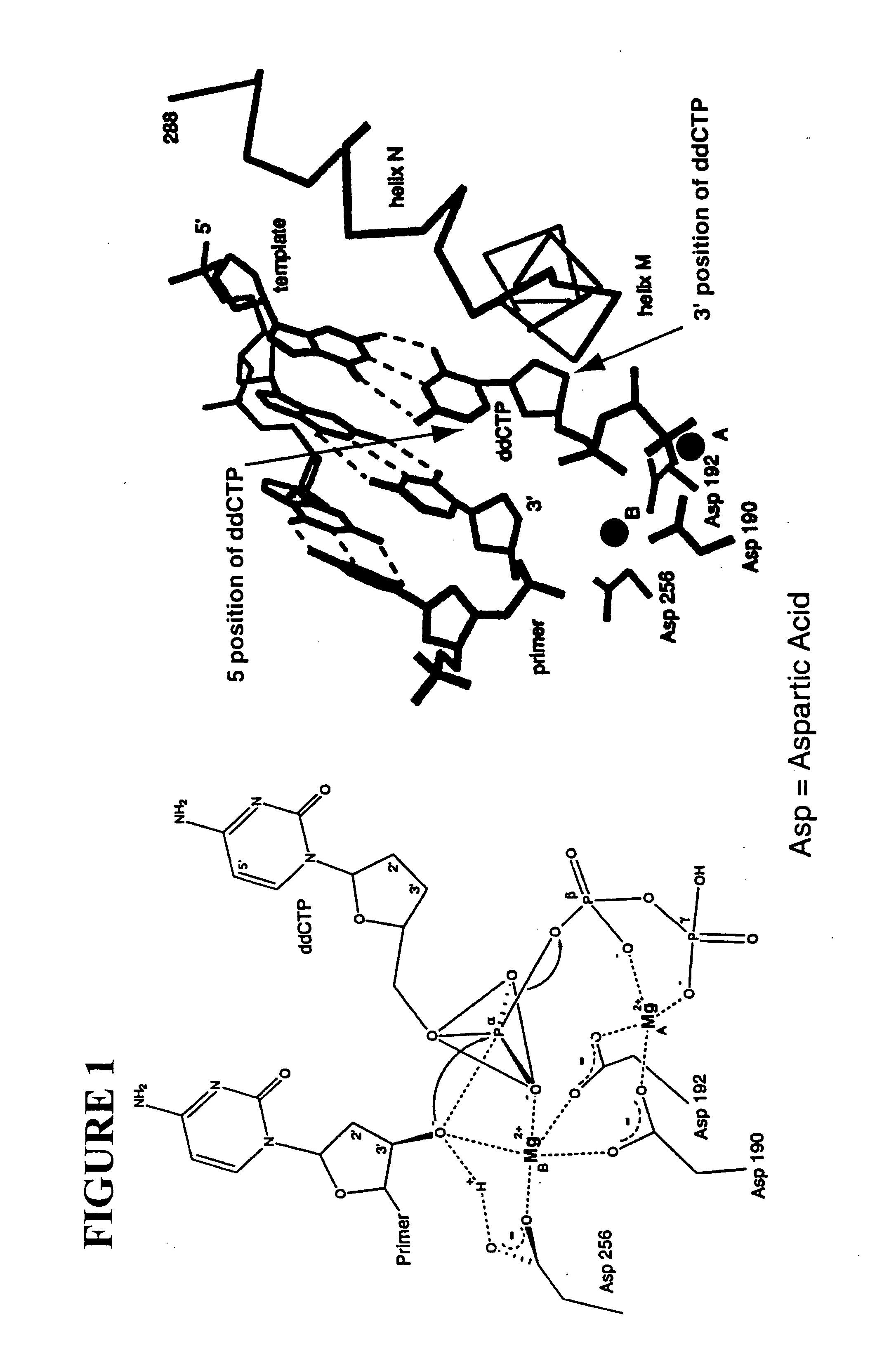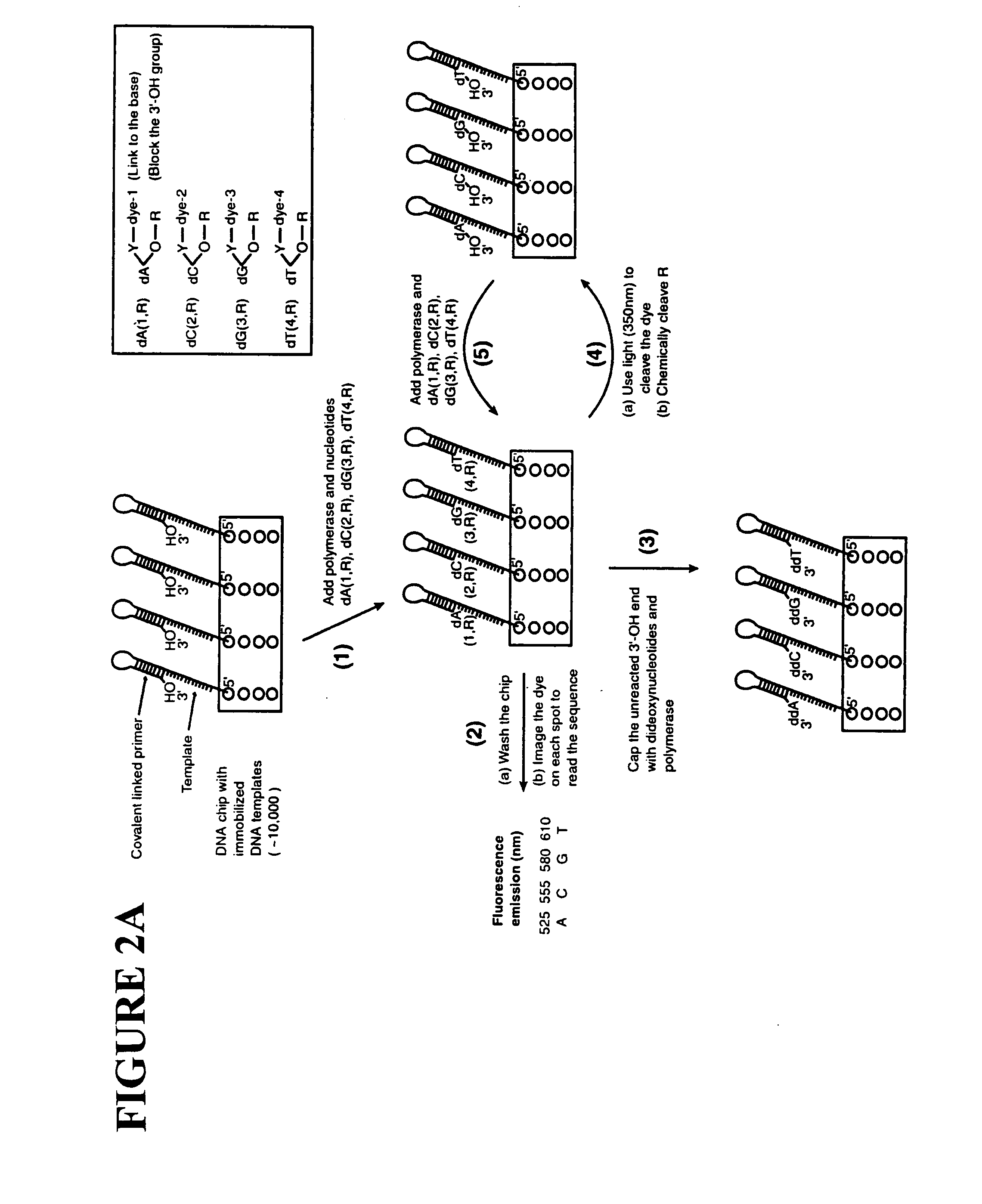Massive parallel method for decoding DNA and RNA
a mass-parallel method and dna technology, applied in the field of mass-parallel method for decoding dna and rna, can solve the problems of difficult identification, inability to detect heterozygotes unambiguously, and insufficient accuracy of dna sequencing methods based on electrophoresis, and still bottlenecks in high-throughput dna sequencing and mutation detection projects
- Summary
- Abstract
- Description
- Claims
- Application Information
AI Technical Summary
Benefits of technology
Problems solved by technology
Method used
Image
Examples
Embodiment Construction
[0059]The following definitions are presented as an aid in understanding this invention.
[0060]As used herein, to cap an —OH group means to replace the “H” in the —OH group with a chemical group. As disclosed herein, the —OH group of the nucleotide analogue is capped with a cleavable chemical group. To uncap an —OH group means to cleave the chemical group from a capped —OH group and to replace the chemical group with “H”, i.e., to replace the “R” in —OR with “H” wherein “R” is the chemical group used to cap the —OH group.
[0061]The nucleotide bases are abbreviated as follows: adenine (A), cytosine (C), guanine (G), thymine (T), and uracil (U).
[0062]An analogue of a nucleotide base refers to a structural and functional derivative of the base of a nucleotide which can be recognized by polymerase as a substrate. That is, for example, an analogue of adenine (A) should form hydrogen bonds with thymine (T), a C analogue should form hydrogen bonds with G, a G analogue should form hydrogen bo...
PUM
| Property | Measurement | Unit |
|---|---|---|
| mass resolution | aaaaa | aaaaa |
| molecular weights | aaaaa | aaaaa |
| molecular weights | aaaaa | aaaaa |
Abstract
Description
Claims
Application Information
 Login to View More
Login to View More - Generate Ideas
- Intellectual Property
- Life Sciences
- Materials
- Tech Scout
- Unparalleled Data Quality
- Higher Quality Content
- 60% Fewer Hallucinations
Browse by: Latest US Patents, China's latest patents, Technical Efficacy Thesaurus, Application Domain, Technology Topic, Popular Technical Reports.
© 2025 PatSnap. All rights reserved.Legal|Privacy policy|Modern Slavery Act Transparency Statement|Sitemap|About US| Contact US: help@patsnap.com



